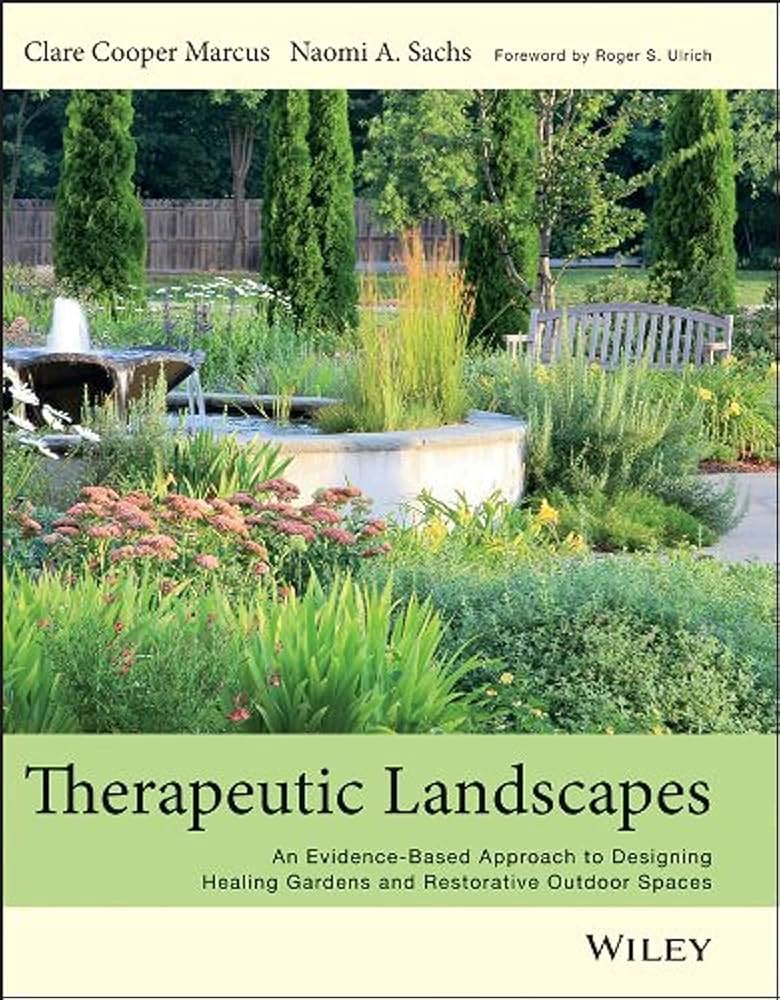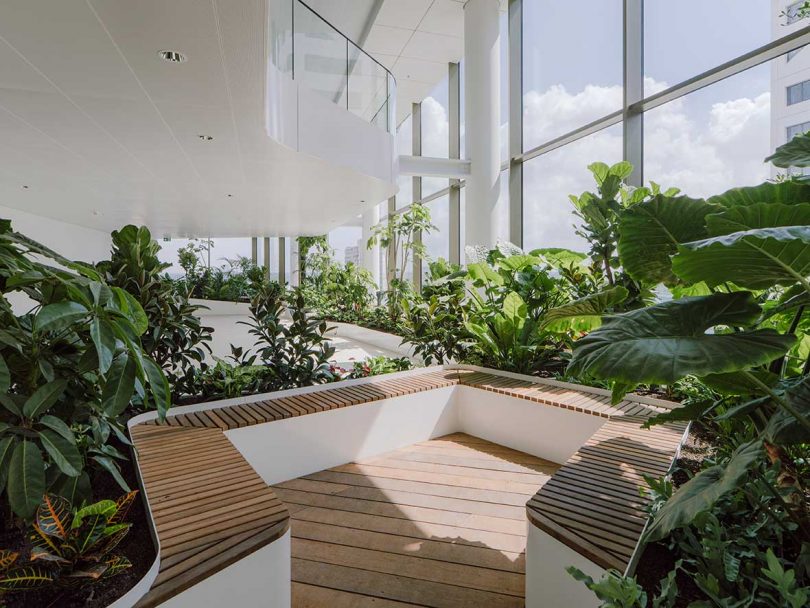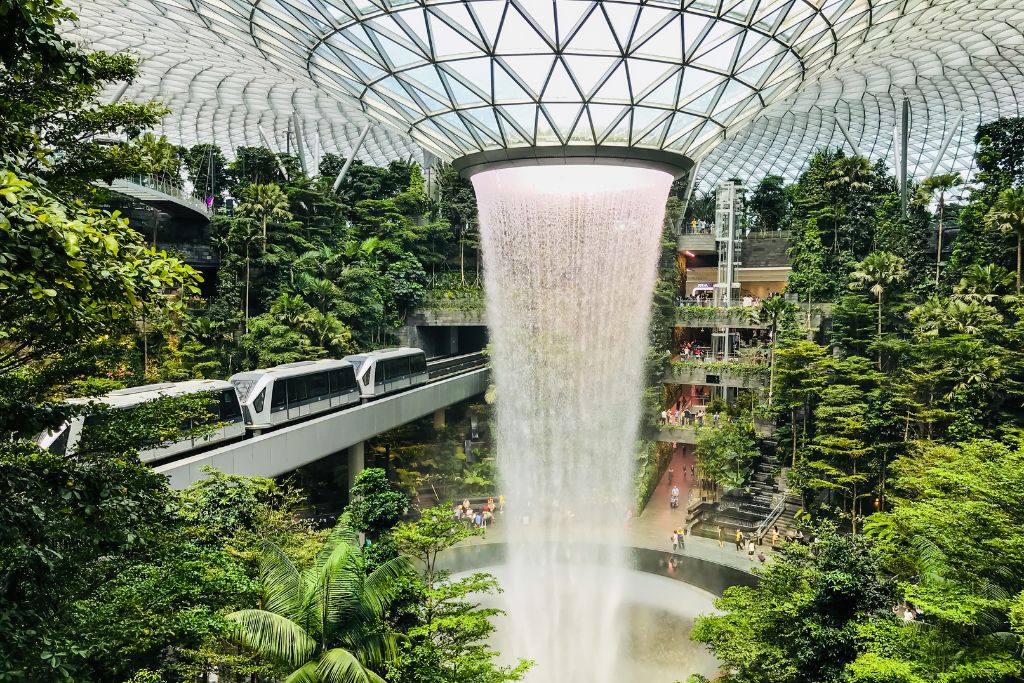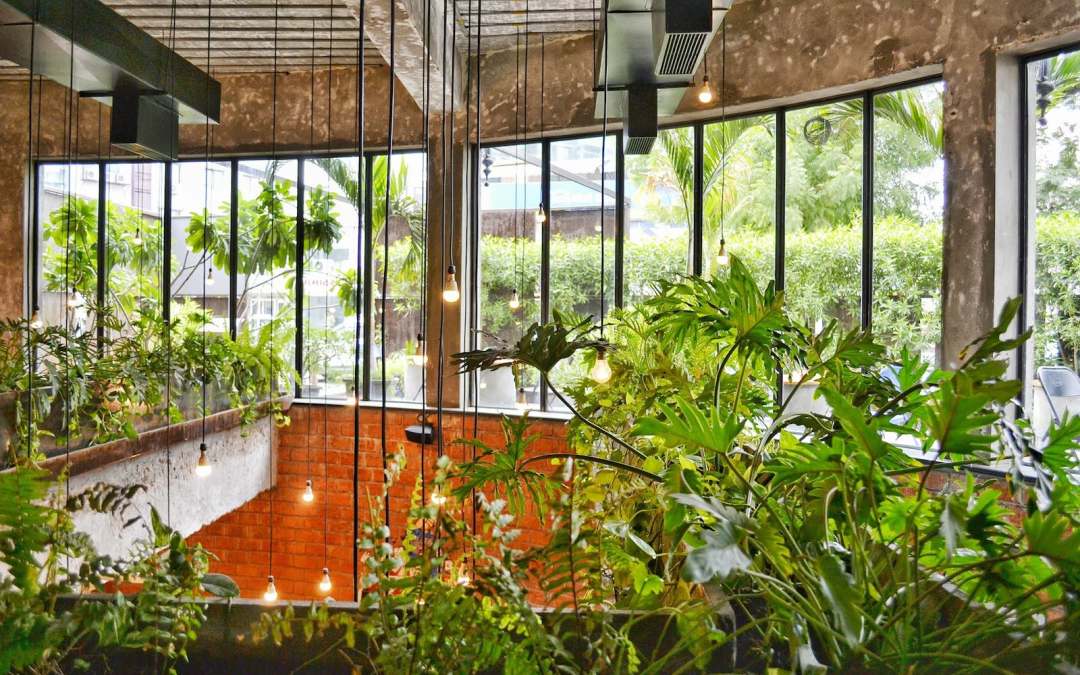Exploring the Benefits of Therapeutic Landscapes in Urban Areas
In contemporary urban environments, the necessity for restorative spaces has reached an unprecedented level of importance.
Therapeutic landscapes, including healing gardens, community parks, and rooftop gardens, play a critical role in enhancing the well-being of urban residents. These spaces provide a refuge from the demands of city life, offering substantial mental, physical, and social benefits.
However, the creation of these green havens presents a range of challenges. This article examines the significance of therapeutic landscapes, categorizes their various types, discusses design strategies, highlights successful case studies, and considers future prospects for urban communities.
It invites readers to explore how these green spaces can transform urban settings and enhance overall quality of life.
Why are Therapeutic Landscapes Important in Urban Areas?
Therapeutic landscapes are essential for improving the quality of life in urban areas, as they primarily promote mental health and well-being through exposure to nature. These landscapes, which encompass public parks, community gardens, and urban forests, create restorative environments that facilitate social interaction and enhance physical health, thereby fostering a connection between urban residents and their environment.
The incorporation of therapeutic landscapes in urban design not only enhances urban biodiversity but also contributes to the establishment of healing environments that support community well-being and resilience, ultimately addressing health disparities.
How Do They Benefit Urban Dwellers?
Therapeutic landscapes offer numerous advantages to urban residents, significantly improving both mental and physical well-being through nature-based solutions and effective urban planning. Research indicates that regular exposure to green spaces, such as public parks and community gardens, not only fosters social interaction but also promotes stress reduction and mental restoration, serving as a natural form of therapy.
These environments facilitate community engagement, cultivating a sense of place attachment and social cohesion that is essential for the overall well-being of city inhabitants.
For individuals navigating the fast-paced nature of urban life, these natural retreats provide crucial opportunities for relaxation and rejuvenation. Studies have demonstrated that spending time in environments abundant with flora and fauna can lead to decreased anxiety levels, improved mood, and enhanced concentration.
Furthermore, participation in community gardening and organized outdoor activities strengthens relationships among neighbors, fostering a supportive community atmosphere.
As urban planners acknowledge the significance of such spaces, they contribute to the development of a healthier, more interconnected population, transforming cities into venues of holistic growth and sustainable living.
What are the Challenges of Implementing Therapeutic Landscapes in Urban Areas?
The implementation of therapeutic landscapes in urban areas presents a series of challenges that urban planners and landscape architects must address, particularly in relation to environmental equity and urban inequality.
Factors such as high population density, limited available space, and budget constraints often impede the development of sustainable and accessible green spaces. Achieving a balance between aesthetics and functionality, while also ensuring biodiversity and habitat creation, represents significant obstacles in the effective design of therapeutic landscapes.
Disparities in access to green spaces within urban populations frequently reflect broader social and economic inequities, complicating efforts to establish inclusive environments.
Urban planners are tasked with the complex challenge of integrating these landscapes into existing infrastructure while meeting the needs of diverse community members. This endeavor necessitates not only innovative design strategies but also collaborative approaches that take into account local context and cultural significance.
Furthermore, sustainable practices must be integrated into the planning process to ensure that these landscapes promote resilience in the face of climate change, ultimately enhancing the well-being of urban residents and fostering environmental stewardship.
Types of Therapeutic Landscapes in Urban Areas
There are various types of therapeutic landscapes within urban areas, each specifically designed to promote well-being and environmental health through nature-based solutions.
Healing gardens, community parks, urban farms, rooftop gardens, and green spaces associated with public transportation all play distinct roles in enhancing urban ecosystems and supporting the mental health of city residents.
These therapeutic landscapes not only improve access to nature but also contribute to urban biodiversity and the overall livability of cities.
1. Healing Gardens
Healing gardens are meticulously designed therapeutic landscapes aimed at promoting mental health and well-being through restorative environments and exposure to nature. These spaces typically feature sensory experiences, a diverse array of plant species, and tranquil areas for mindfulness, offering urban dwellers opportunities for relaxation and stress reduction.
In urban environments, where the constant hustle and bustle can become overwhelming, these gardens serve as vital retreats from the fast-paced atmosphere.
Elements such as water features provide calming auditory landscapes, while vibrant flowers and fragrant herbs stimulate multiple senses, contributing to emotional well-being. Pathways designed for walking or sitting encourage gentle movement and contemplation, which have been shown to elevate mood and foster a sense of connection with nature.
Moreover, the incorporation of communal areas within these gardens facilitates social interaction, thereby strengthening community bonds among urban residents and further amplifying their positive impact on mental health.
2. Community Parks
Community parks are essential therapeutic landscapes within urban environments, facilitating social interaction and promoting physical health through designated recreational spaces and outdoor activities. These parks provide crucial green areas for residents, thereby enhancing overall community well-being and addressing environmental equity in urban planning.
The availability of these communal spaces can significantly mitigate feelings of isolation and stress, fostering a sense of belonging among diverse demographics. They encourage families to convene, friends to socialize, and neighbors to connect, thereby forming networks that fortify community ties.
By offering secure environments for physical activity, including walking trails, playgrounds, and sports facilities, these parks contribute positively to physical health outcomes. Community parks play a pivotal role in advocating for environmental equity, ensuring that all residents, irrespective of socioeconomic status, have access to the benefits of nature and active recreation.
3. Urban Farms
Urban farms represent a significant form of therapeutic landscape that integrates agriculture with community engagement, thereby promoting food security and sustainable practices within urban environments.
These spaces not only provide access to fresh produce but also function as platforms for social interaction and education, exemplifying effective nature-based solutions to urban challenges.
Furthermore, urban farms cultivate a sense of belonging and responsibility among local residents, fostering a community that thrives on shared objectives and collaborative efforts.
By increasing access to nutritious food options, these farms effectively address the challenges posed by food deserts, enhancing public health and wellness.
Participation in urban agriculture also facilitates the development of valuable skills, give the power toing individuals while strengthening their connection to the environment.
Consequently, urban farms play a vital role in enhancing urban resilience, promoting biodiversity, and mitigating the impacts of climate change through sustainable practices that are seamlessly integrated into the urban landscape.
4. Rooftop Gardens
Rooftop gardens represent innovative therapeutic landscapes that enhance urban design by transforming otherwise unused spaces into green infrastructure, thereby improving biodiversity corridors and promoting environmental benefits. These gardens not only offer aesthetic appeal but also contribute to improved air quality and urban resilience.
By converting rooftops into verdant retreats, they provide a unique solution for mitigating the urban heat island effect, effectively cooling surrounding areas and reducing energy consumption. These elevated ecosystems foster biodiversity by creating habitats for birds, pollinators, and other wildlife, thereby nurturing a vibrant urban ecosystem.
As urban areas continue to expand, the integration of such green spaces becomes increasingly essential for sustainable living.
Furthermore, rooftop gardens promote community interaction and support mental well-being, allowing residents to engage with nature and fostering a sense of tranquility amidst the hustle and bustle of city life. Ultimately, these rooftop gardens exemplify the harmonious integration of nature and architecture, paving the way for a more eco-conscious future.
5. Green Spaces in Public Transportation Areas
Integrating green spaces within public transportation areas represents a critical strategy for enhancing therapeutic landscapes in urban environments. This approach improves accessibility to nature and promotes walkability among urban residents. Such spaces function as restorative environments, offering opportunities for relaxation and social interaction amidst the fast-paced nature of urban life.
Green spaces are essential for fostering urban connectivity by linking various modes of transport while simultaneously enriching the surrounding environment. By incorporating parks, gardens, and green belts into transportation nodes, cities can effectively mitigate urban heat and enhance air quality, thereby contributing to the creation of healthier communities.
Moreover, green infrastructure not only attracts individuals who appreciate nature but also promotes physical activity, enabling residents to engage in walking, cycling, or simply enjoying the outdoors. As urban areas continue to expand, prioritizing these green spaces within public transportation planning is vital for enhancing the overall quality of life for all citizens.
How to Design and Create Therapeutic Landscapes in Urban Areas
The design and creation of therapeutic landscapes in urban areas require a careful integration of natural elements, community engagement, and sustainable design principles to improve the overall urban experience.
Implementing effective urban planning strategies that incorporate green spaces, biodiversity, and restorative environments is essential for promoting the well-being of city residents.
1. Incorporating Natural Elements
Incorporating natural elements into therapeutic landscapes is essential for enhancing urban design and promoting biodiversity, thereby creating spaces that afford city dwellers significant exposure to nature.
Elements such as native plants, water features, and diverse habitats are vital for fostering ecological health and overall well-being.
These features not only enhance the aesthetic value of urban environments but also play a critical role in supporting local wildlife. By integrating such components, urban planners can establish environments that nurture pollinator populations and other species, thereby improving ecosystem stability and resilience.
Research has demonstrated that exposure to green spaces positively influences mental health, increases physical activity, and reduces stress levels among residents. Therefore, prioritizing naturalistic designs in urban development is a prudent investment, yielding long-term benefits for community health, biodiversity, and the overall quality of urban life.
2. Providing Access to Green Spaces
Providing access to green spaces is essential for the effectiveness of therapeutic landscapes, as it has a direct impact on community health and the well-being of urban residents. Integrating accessible green spaces into urban planning not only promotes nature accessibility but also enhances social interaction and community engagement.
These green areas serve as vital resources that encourage physical activity, reduce stress, and foster mental clarity among individuals. They cultivate a sense of belonging and pride within communities.
As urban areas continue to expand, the necessity of incorporating parks, gardens, and recreational spaces becomes increasingly apparent.
Such spaces not only improve air quality and support biodiversity but also function as buffers against urban heat, enhancing neighborhood resilience to climate change. By prioritizing nature accessibility, urban planners can make significant contributions to the health and happiness of the population, ultimately fostering more sustainable urban environments.
3. Promoting Physical Activity
Promoting physical activity through the design of therapeutic landscapes is imperative for enhancing urban health and overall community well-being. The creation of recreational spaces that encourage active transportation and outdoor activities fosters a healthier lifestyle among urban residents while also maximizing the therapeutic benefits of green spaces.
Such environments not only serve as venues for exercise but also facilitate social interaction, thereby mitigating feelings of isolation. Access to parks, trails, and other recreational areas plays a significant role in enabling more active choices, such as walking or cycling, which are essential for maintaining physical fitness.
These landscapes also support mental health by providing a calming contrast to the fast-paced nature of urban life, promoting relaxation, and alleviating stress. By integrating these elements into urban planning, cities can cultivate healthier populations, ultimately resulting in improved public health outcomes.
4. Creating a Sense of Community
Creating a sense of community within therapeutic landscapes is essential for fostering social interaction and encouraging community engagement among urban residents. These landscapes should be thoughtfully designed to cultivate place attachment, offering spaces for gatherings and events that strengthen community bonds.
By incorporating features such as communal gardens, open-air amphitheaters, and interactive art installations, these environments can serve as vibrant centers where individuals feel welcomed and valued.
The integration of areas for recreational activities promotes well-being and facilitates connections among diverse groups, contributing to the dismantling of social barriers.
Engaging local residents in the design process give the power tos them and ensures that their unique needs are addressed, ultimately fostering a deeper emotional connection to the space. Such deliberate landscaping not only benefits psychological health but also enhances the overall vitality of the community, resulting in a more cohesive and supportive atmosphere.
Case Studies of Successful Therapeutic Landscapes in Urban Areas
Analyzing case studies of successful therapeutic landscapes in urban environments yields significant insights into effective design and implementation strategies that contribute to community health and urban resilience.
These examples demonstrate how thoughtfully designed green spaces can transform urban settings into vibrant, restorative landscapes that foster overall well-being.
1. The High Line in New York City
The High Line in New York City serves as a notable example of an effective therapeutic landscape, having transformed an abandoned elevated railway into a vibrant public park that promotes community engagement and encourages exposure to nature. This innovative urban design not only enhances the aesthetic appeal of the area but also provides a restorative space for both residents and visitors.
The thoughtful integration of native plants and green spaces offers a welcome respite from the urban environment, fostering mental well-being and reestablishing a connection to nature that is often lacking in densely populated areas. By inviting local artists to exhibit their work and organizing community events, this urban oasis plays a vital role in facilitating social connections among diverse groups.
Furthermore, the carefully considered design elements, such as seating areas and scenic viewpoints, enhance the overall experience, transforming the space from one of mere passive enjoyment into a dynamic hub for interaction and creativity.
Ultimately, the High Line exemplifies how effective urban planning can cultivate community well-being while celebrating the beauty of nature in the heart of a bustling city.
2. The Gardens by the Bay in Singapore
The Gardens by the Bay in Singapore serve as a prime example of a successful therapeutic landscape that effectively integrates urban biodiversity with sustainable design. This project creates a lush green space that significantly enhances community well-being. It illustrates how urban environments can promote environmental health while providing a sanctuary for both residents and wildlife.
By incorporating a diverse range of plant species and distinct habitat zones, the Gardens not only enrich the local ecosystem but also offer residents a tranquil environment for relaxation and recreation. The meticulously designed features, including the iconic Supertree Grove and the impressive Flower Dome, facilitate an immersive experience that encourages individuals to engage with nature.
This environment promotes physical health through activities such as walking, jogging, or yoga, while simultaneously fostering mental well-being by reducing stress and improving mood. Furthermore, community involvement in sustainability initiatives within the gardens raises awareness regarding ecological preservation, positioning it as a model for urban green spaces globally.
3. The Cheonggyecheon Stream in Seoul
The Cheonggyecheon Stream in Seoul serves as an exemplary case of urban renewal, transforming a former highway into a scenic waterway that enhances public health and fosters community engagement. This restoration project illustrates the significance of integrating natural elements into urban design to improve the quality of life in densely populated areas.
Throughout its transformation, the stream has emerged as a sanctuary for both residents and visitors, offering a tranquil retreat from the urban environment. As individuals walk along its banks, they not only experience the soothing effects of the water but also engage in increased physical activity and social interaction.
The presence of lush greenery and vibrant public spaces encourages community gatherings, thereby cultivating a sense of belonging.
Research indicates that access to such therapeutic landscapes can markedly reduce stress and promote mental well-being, highlighting the stream’s essential role in Seoul’s comprehensive public health strategy.
Future Outlook for Therapeutic Landscapes in Urban Areas
The future outlook for therapeutic landscapes in urban areas is promising, as municipalities increasingly acknowledge the significance of incorporating green spaces into urban design to promote sustainability and community health.
As urban resilience gains priority, the development of innovative therapeutic landscapes will remain essential in enhancing the quality of life for urban residents.
How Can We Continue to Incorporate Them in Urban Design and Planning?
The continued incorporation of therapeutic landscapes in urban design and planning necessitates a strategic approach that prioritizes community engagement and nature-based solutions. Urban planners and landscape architects must collaborate with local communities to ensure that these spaces effectively meet the needs of residents and enhance their overall well-being.
This collaboration fosters a sense of ownership among residents, encouraging active participation in the design process. By soliciting community input, urban planners can create environments abundant in greenery, walking paths, and recreational facilities that promote both mental and physical health.
Such spaces, designed with sustainability in mind, not only enhance biodiversity but also mitigate urban heat and improve air quality. Furthermore, integrating educational programs that emphasize the benefits of these therapeutic landscapes can strengthen community ties while fostering a culture of stewardship towards natural surroundings.
Ultimately, the successful integration of these landscapes relies on recognizing the essential role of community voices in shaping healthier urban ecosystems.
What are the Potential Benefits for Urban Communities?
The potential benefits of therapeutic landscapes for urban communities are substantial, encompassing improvements in health, enhanced social interaction, and increased environmental sustainability. By integrating these landscapes into urban environments, communities can experience significant positive effects on both mental and physical health, thereby fostering stronger social bonds and resilience in the face of urban challenges.
These distinctive green spaces provide tranquil environments that encourage physical activity and relaxation, which can substantially reduce stress and promote overall well-being. They serve as vibrant centers for community gatherings, enabling individuals to connect, share experiences, and collaborate on initiatives that foster a sense of belonging. This not only enhances social cohesion but also strengthens residents’ commitment to maintaining sustainable practices within their neighborhoods.
By prioritizing these therapeutic landscapes, urban areas can effectively mitigate the adverse effects of urbanization while nurturing a healthier, more engaged population that values biodiversity and environmental stewardship.
Frequently Asked Questions
What are therapeutic landscapes in urban areas?
Therapeutic landscapes in urban areas refer to outdoor spaces that are intentionally designed to promote physical, mental, and emotional well-being for individuals living in urban environments.
What are some examples of therapeutic landscapes in urban areas?
Examples of therapeutic landscapes in urban areas include community gardens, parks and green spaces, rooftop gardens, and outdoor art installations.
How do therapeutic landscapes in urban areas benefit individuals?
Therapeutic landscapes in urban areas have been shown to reduce stress, improve mood, increase physical activity, and provide opportunities for social interactions and community building.
Are therapeutic landscapes in urban areas accessible to all individuals?
Efforts are being made to ensure that therapeutic landscapes in urban areas are accessible to all individuals, regardless of age, ability, or socioeconomic status. This includes features such as wheelchair ramps, sensory gardens for those with disabilities, and free public programming.
How are therapeutic landscapes in urban areas designed?
Therapeutic landscapes in urban areas are designed with careful consideration of the natural elements, such as plants, water features, and lighting, as well as the use of materials that are environmentally-friendly and promote sustainability.
Where can I find more information about therapeutic landscapes in urban areas?
There are many resources available online, as well as organizations and community groups dedicated to promoting and creating therapeutic landscapes in urban areas. You can also check with your local parks and recreation department for information and events related to this topic.

I’m Bruno, an architect with a deep passion for Biophilic Design in Urban Architecture. Throughout my career, I’ve focused on integrating natural elements into urban planning, and I created this site to share my insights and foster a deeper understanding of how biophilic principles can significantly enhance urban living. Dedicated to sustainable development, I continually explore innovative design solutions that promote both environmental and human well-being in city landscapes.














Publicar comentário